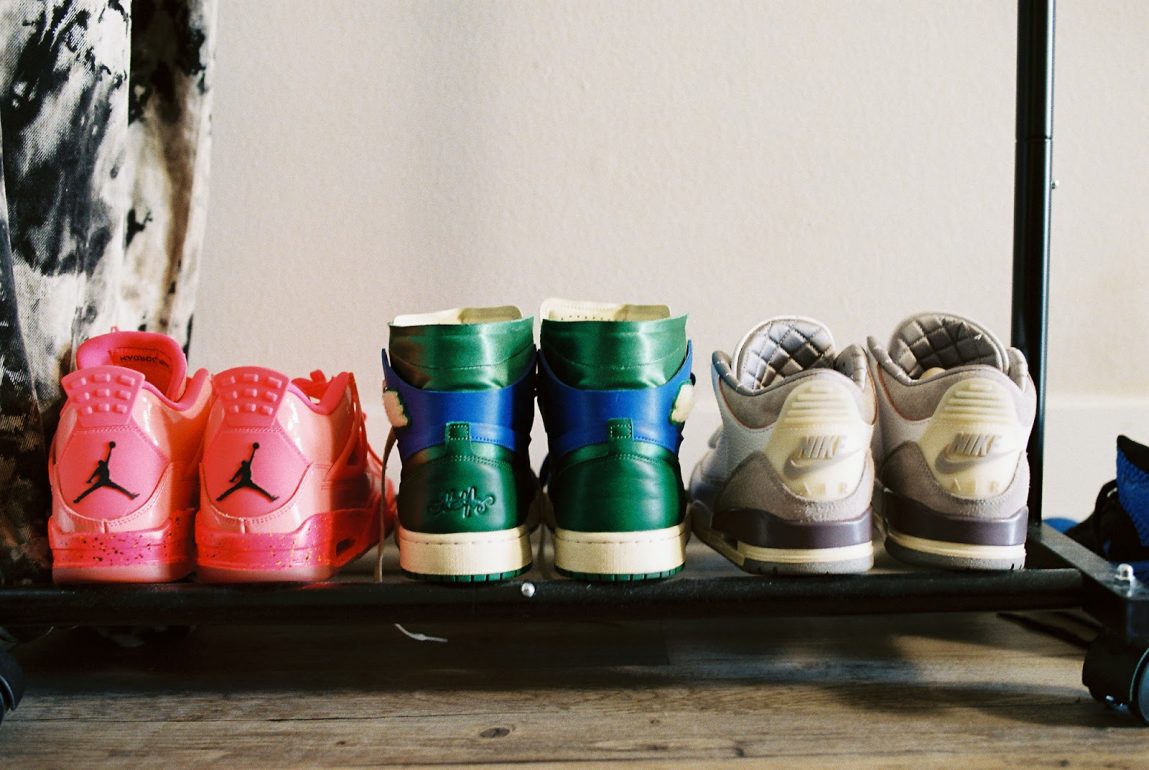Any time a Nike collab or womenâ€
How do they get free sneakers? What do they actually do?
“I think a lot of people think I just take pictures of product, right? Get free shoes from Nike and I just go outside and take a picture and I’m done,†Chicago-based sneaker reporter and content creator Ticara Devone said.
Influencers or content creators are individuals who create engaging or influential content typically over a digital platform or medium targeting a specific audienceâ€
A 2018 study from Lego polled thousands of kids in the U.S., China and the United Kingdom found that a third of children ages 8 to 12 wanted to be a vlogger or a YouTuber. Naturally, young people exposed to the curated timelines of a content creator would want what appears to be living a wonderful, albeit highly produced, life of an influencer as their career.Â
The sneaker industry, and subsequently those working as content creators within the space, has been predominantly men, but we are slowly seeing more women sneaker influencers. “I feel like now there’s more quantitative data for [brands] to see women love sneakers,†Devone says. “There is a lot more information out there to back brands not only creating more products for women, but leveraging women content creators to reach female consumers.â€
Devone graduated with a degree in music business management but her work led her to writing. With the rise in popularity of Instagram, she eventually started to consider the visual side of content creation. Her full-time and part-time work throughout her career really helped her expand the work she does with her own platforms – she freelances for a public relations agency working on the TikTok of a fortune 500 account.
Admittedly not super familiar with the video-based platform at the time, she was afforded the opportunity to learn more about it through this gig. “With the jobs that I chose, I always try to make sure they kind of match and go hand in hand with what I’m doing outside of that work,†she said.
Not only have her corporate or past full time jobs in advertising and PR helped her learn about marketing best practices and how to create a pitch deck or how to use different social media platforms in ways she could translate to her own work, they also offered the potential to establish relationships to grow with as she moved on and grew in the sneaker space.Â
Sheâ€
“It’s not necessarily Instagram Reel or photos that they can use for six months or whatever time frame,†she said. “It’s [also] projects that require me to be on site and hands on with people like hosting during the workshop or sitting on a panel.â€
Meanwhile, content creator and host Kayce Kirihara shared some advice for longevity in this space. Kirihara has been building her audience since the start of Instagram – over ten years – and has worked with brands like Foot Locker, NBA, WNBA and more. “Itâ€
Photo: @infamouskayceÂ
Knowing your audience is a major key, Kirihara added. “As soon as you can understand your audience and what kind of content they like from you, thatâ€
On the other side of that, Callahan Zacks, a SoleSavy member and brand ambassador is still finding her footing as a content creator but shared similar sentiments of authenticity. “The biggest thing Iâ€
Last year, Zacksâ€
From a brand perspective, there are things to keep in mind. Jamiersen Green, Influencer Marketing Manager at Foot Locker shared some insight on how he finds influencers to partner with. “I’ve been hiring women to host in-person events,†he says. In addition to hosting, this includes being on panels, or being responsible for the invite list to events.Â
The social content heâ€
He points to Jourdan Ash, the founder of the sneaker platform created to center Black and brown women, True To Us. Heâ€
When looking for women to hire, he says the main things heâ€
While Green says he typically heavily researches people before reaching out to them, itâ€
Content Creator Manager, Alissa Nevita says she thinks having a deck is great for pitching a specific project, but ultimately, there are a few things she likes her clients to have in place.Â
“I think the biggest thing is having a clear understanding of what their brand is and what they’re trying to achieve or what they want to be known for,†she says. From there, having a succinct bio to illustrate that is a necessity.
Nevita recommends to content creators she works with to also have a website. “A website is one place to be able to provide a client or a brand with insight into who you are, brands you’ve worked with, highlight your most impactful work with the space to discuss what it meant to you and full contact information.â€Â
The reality is, some brand partnership content only lives on social platforms for a limited amount of time, but that shouldnâ€
Of course, not every content creator has or needs a manager but there are times when an agent or a manager is worthwhile. Agents are responsible for bringing in opportunities, while managers may bring in opportunities but their main functions are to handle communications with the brandsâ€
“Everything is negotiable,†Green said. More specifically, Nevita points to deliverables, timelines usage and exclusivity clauses. “For instance, with a brand asking for two infeed posts and three story frames linked, you can negotiate that down,†she offers as an example.
And, as a manager thatâ€
Content creation and influencer marketing is just barely a decade into its existence, and the womenâ€
Come for the sneakers, stay for the community.
Join SoleSavy to enjoy full membership benefits. Buy sneakers for retail with our tools and tech, shop the COLLECT marketplace app with zero fees, and join an exclusive community of sneakerheads.
Try SoleSavyâ€
Â
